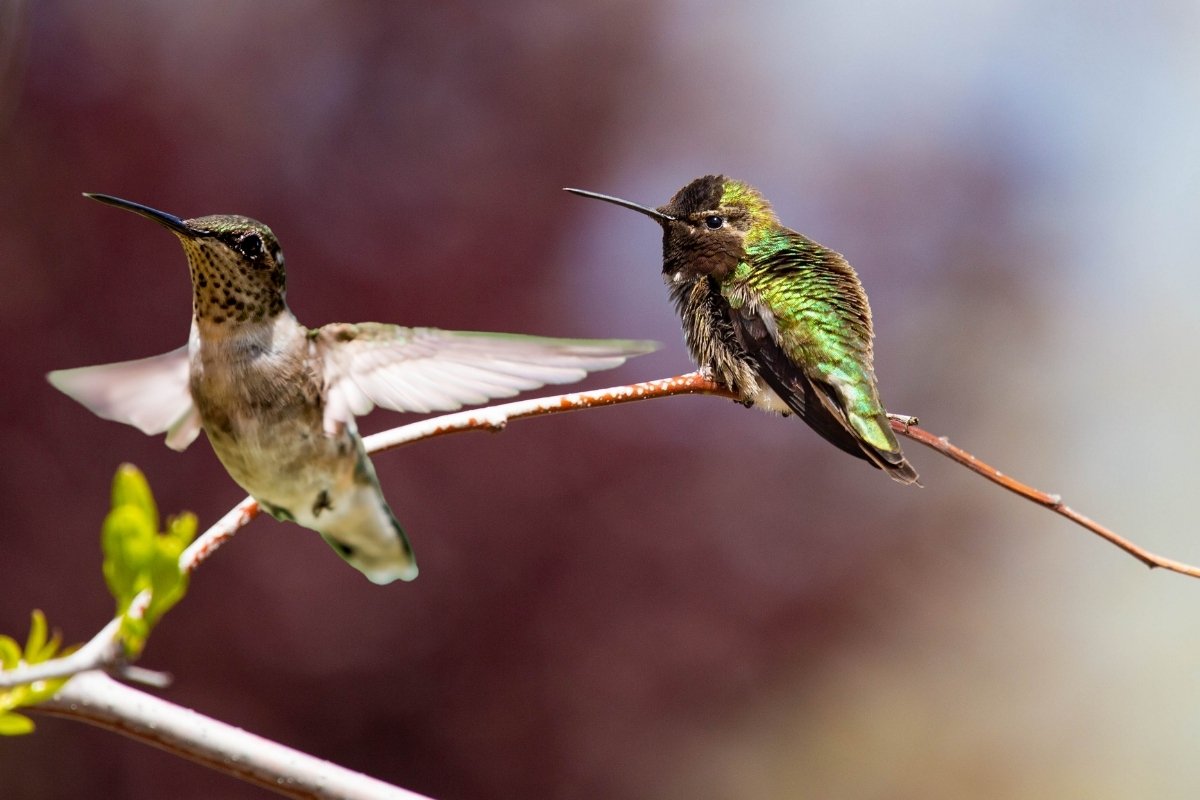Have you wondered what is the difference between male and female hummingbirds? In some species, the male and female are easy to tell apart. But what about the species that we rarely encounter?
Size, behavior, and appearance are signs you need to follow to find out the sex of the hummingbird. The mating season is the easiest time to identify the hummingbird’s gender. Once you spend some time analyzing their behavior, you can quickly tell what is the difference between male and female hummingbirds.
How To Tell If A Bird Is Male Or Female
Birds are small and tend to move fast, so it’s hard to find out their gender by analyzing body parts. However, nature has made it easier for us. The most common giveaway in birds is their feathers. Even in the birds belong to the same species, they can have a completely different color.
But why do you need to know what is the difference between male and female hummingbirds? First, both genders have different needs. As the mating season approaches, the female hummingbird is looking for a suitable spot to nest. Females pick territory depending on food and safety. Hummingbirds are territorial, but each gender follows different criteria.

Male hummingbirds pick territory depending on food and the female presence. They can even be aggressive if another male hummingbird invades their territory or feeding spot!
Male Vs. Female Hummingbird Sounds
What is the difference between male and female hummingbirds regarding sounds? Male hummingbirds sing loudly and flap their wings at the highest speed when trying to impress a female.
On the other hand, the female hummingbirds emit loud sounds when trying to chase off predators or other hummingbirds from their territory. This often happens when the female is nesting.
Outside of the mating season, there’s not much of a difference in how both genders hover and hum.
Check Out Hummingbird Weathervane: 9 Amazing Décor Pieces
Are Hummingbirds Monogamous?
When it comes to raising a family, what is the difference between male and female hummingbirds? Do male and female hummingbirds stay together after the young ones hatch?
Hummingbirds are loners, even though the male tries hard to impress the female during mating. Once they mate, which lasts merely a few seconds, each of them goes their way. The male proceeds to mate with other females, while the female goes to build a nest.
Hummingbirds can lay more than one broad a year. For their next broad, they often mate with a completely different male.
Their behavior makes it hard to spot a pair of male and female hummingbirds, so you could compare their differences.
National Geographic Backyard Guide to the Birds of North America
What Does Bird Gender Define
Gender plays a significant role in several aspects of the hummingbird’s life and behavior. While some birds look very much alike despite the different gender, the hummingbirds are very different.
The main signs separating males from females and vice versa are appearances, size, and behavior.
Appearance
At first sight, what is the difference between male and female hummingbirds? The color of their feathers is the first thing you notice.
The male hummingbird usually features brighter colors. The main reason is to catch the eye of the female during the mating season. Not only are the males more colorful, but the feathers on their back have a sheen under direct sunlight. The females have a more monotonous, dull look.
We mentioned how the male produces different sounds, but did you know that their throats also have a different color? The neck of the male hummingbird is often a bright iridescent color.
Let’s take Anna’s hummingbird, for example. The male has a fuchsia-colored neck, while the female has tiny orange spots hidden under the grey feathers.
Size
Not only are male and female hummingbirds different colors, but they’re also different sizes. Contrary to the expected, it’s the female that is almost 20% larger. And we can understand why; the female lays and raises the young on her own. She starts building her nest even before mating and proceeds to spend about a month with the brood.
Before hatching, the female hummingbird rarely leaves the nest. She’s very protective of her eggs. But in order to survive, she has to have some reserves, which explain the larger body.

Beware that in some hummingbird species, there could be no difference in size. Use size as an extra indicator when there are other signs too.
Behavior
There are 3 aspects of hummingbird behavior that can reveal their gender. If you spot a busy hummingbird mid-summer flying to a tree and back, it’s probably a female building a nest. If you spot a hummingbird fighting another one on your feeder, they’re probably 2 males.
Male hummingbirds tend to be more extravagant, especially during the mating season. You can spot a hummingbird flying way up and diving with a free fall; that’s a male trying to impress the ladies.
Female hummingbirds are aggressive on exceptional occasions, like when defending their nest. Males, on the other hand, fight more often.
Male hummingbirds have 3 stages of aggression: nervous chirping, hovering and fighting. It rarely escalates into a greater fight as the weaker hummingbird tends to retreat.
Young Male Vs. Female Hummingbirds
Have you wondered what is the difference between male and female hummingbirds while they’re young? There aren’t clear differences between the two genders until they’re at least a year old.
The male baby hummingbirds resemble their mother, as well as the female babies. As they grow, the baby feathers fall off, and their new brighter colors appear.
Bottom Line: What Is The Difference Between Male And Female Hummingbirds?
Bird watching is one of the most rewarding hobbies, but it can be hard when your subject moves too fast! If you haven’t managed to discover what is the difference between male and female hummingbirds, we have the answer.
The differences lie in their appearance, behavior, sounds, and size. Next time you have some visitors on your feeders, take a closer look!
FAQ’s
[rank_math_rich_snippet id=”s-d80fc405-b688-4c27-87e1-1cf18000c985″]


